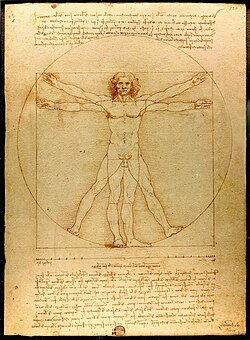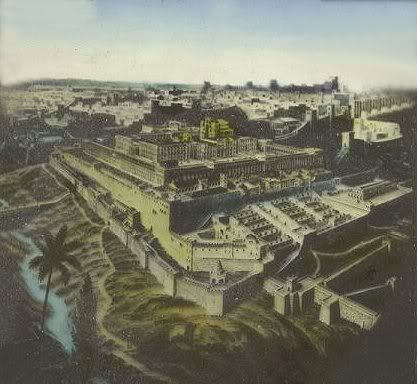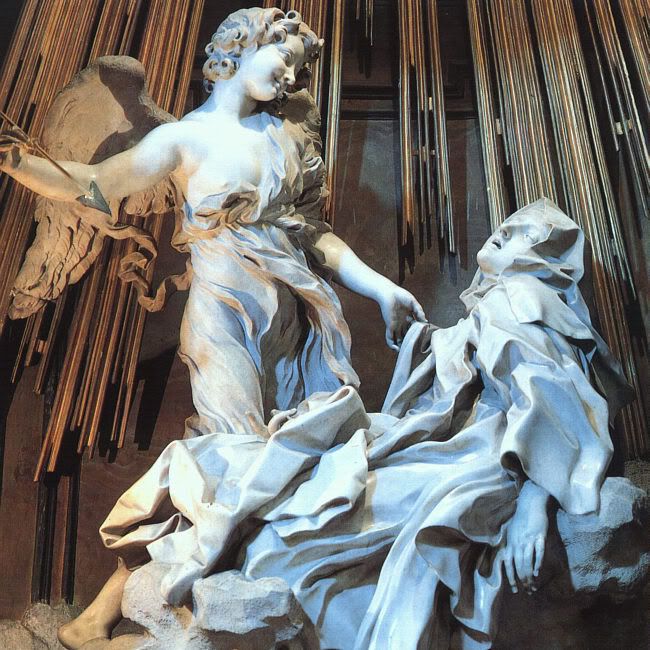Vitruvian Man

Vitruvian Man (ca. 1487). Pen and ink with wash over metalpoint on paper, 344 × 245 mm.
The Vitruvian Man is a world-renowned drawing with accompanying notes created by Leonardo da Vinci around the year 1487[1] as recorded in one of his journals. It depicts a nude male figure in two superimposed positions with his arms and legs apart and simultaneously inscribed in a circle and square. The drawing and text are sometimes called the Canon of Proportions or, less often, Proportions of Man. It is stored in the Gallerie dell'Accademia in Venice, Italy, but is only displayed on special occasions.[2][3]
The drawing is based on the correlations of ideal human proportions with geometry described by the ancient Roman architect Vitruvius in Book III of his treatise De Architectura. The drawing is named in honour of the architect. Vitruvius described the human figure as being the principal source of proportion among the Classical orders of architecture. Other artists had attempted to depict the concept, with less success.
Results 21 to 30 of 69
-
02-13-2009, 10:04 PM #21
Last edited by regnauld; 02-13-2009 at 10:09 PM.
-
02-13-2009, 11:01 PM #22
-
02-14-2009, 08:30 AM #23
nice contribution! keep it coming.
-
02-14-2009, 10:39 AM #24


-
02-14-2009, 10:50 AM #25
-
02-14-2009, 10:54 AM #26Banned User

- Join Date
- May 2008
- Gender

- Posts
- 6,786
the ossuary is wicked! i like it! hehehe!
-
02-14-2009, 11:03 AM #27Banned User

- Join Date
- May 2008
- Gender

- Posts
- 6,786
Temple London. it used to be a preceptory of the English Templars.

-
02-14-2009, 11:04 AM #28Banned User

- Join Date
- May 2008
- Gender

- Posts
- 6,786
the Temple of Solomon.

-
02-14-2009, 11:28 AM #29
-
02-14-2009, 11:35 AM #30Banned User

- Join Date
- May 2008
- Gender

- Posts
- 6,786
i like this statue. there's something lustful and sensual in its portrayal. it's called The Ecstasy of St.Therese by Bernini. i think it's in the vatican. i wonder why the priests keep it.

Advertisement
Similar Threads |
|





 Reply With Quote
Reply With Quote






